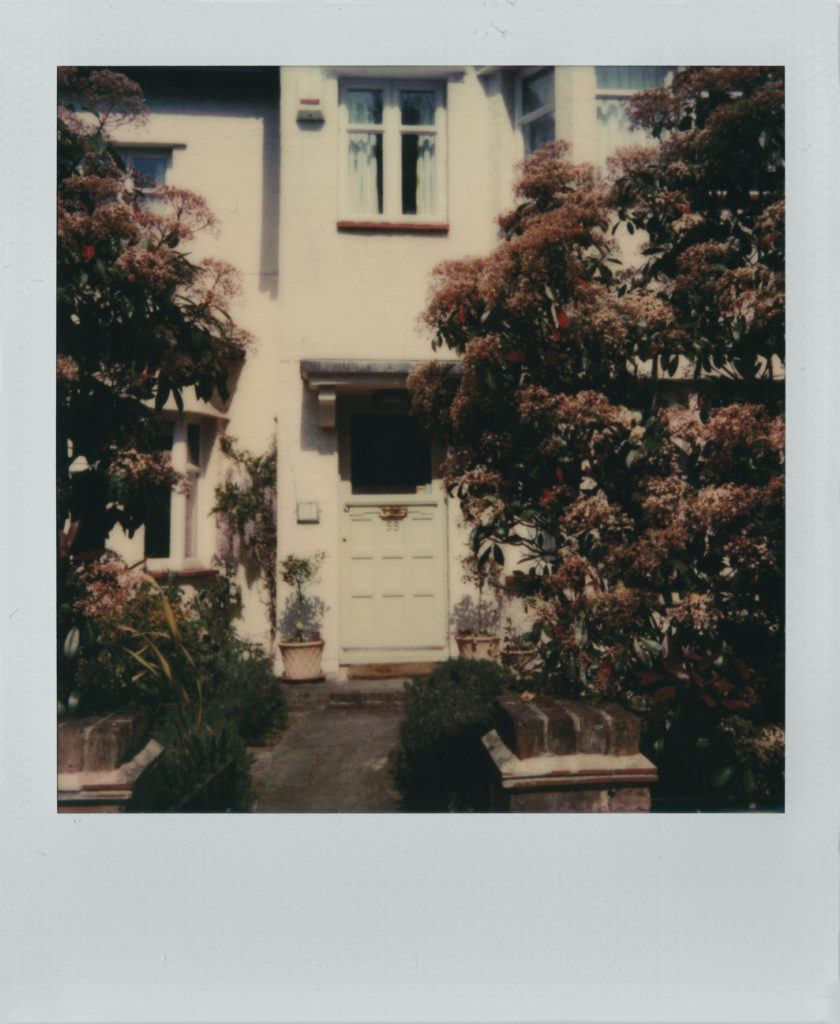In South London, Adam Scovell visits the inconspicuous birthplace of the novelist Anita Brookner.

We can all be guilty sometimes of ignoring what’s directly in front of us, especially in regards to where we live. Travelling sporadically (and admittedly in chaotic idiosyncrasy) around places in search of connections to culture means I’m probably worse than most for ignoring what’s directly on my doorstep. It’s always the things staring us in the face that take the longest to grab our attention. A quick hour’s research and a wander outside of my door, leading to Herne Hill in South London as it happens, revealed a wealth of interesting connections ignored for years of walking about the place and more than half a year of living directly in its centre.
A few houses up from my flat is John Ruskin’s grand mansion, which probably would have once looked over greenery rather than houses. Down at the bottom of the hill sits the refurbished Half Moon pub, a place which attempted to gain a blue plaque a few years ago due to its connection with Dylan Thomas’ drinking habits; the road opposite suspiciously called Milkwood Road. And further towards Dulwich Village sits Ardbeg Road, the surprisingly suburban beginnings of Ida Lupino, one of golden Hollywood’s great leading stars and early female directors. Of all the connections that came up after a hardly in-depth stint of research, the one connecting factor that resonated most was the realisation of having, on an almost daily basis, walked past the house where Booker Prize winning novelist Anita Brookner was born.
Dr. Brookner was a precise and melancholy writer. Her rise to success was as smooth and adept as her meticulous prose. From an early career academic, she became the first woman to hold the Slade professorship of Fine Art at Cambridge University in 1967, after lecturing at Reading and the Courtauld Institute. It would be some time later when her fiction writing came to prominence, her first novel, A Start In Life(1981), aptly named to herald a new and pivotal shift in career. It would be only a couple of years before Brookner won the Booker Prize in 1984 for Hotel Du Lac, fending off stiff competition from J.G. Ballard’s Empire Of The Sunin particular. She went on to write over two dozen successful novels and received a CBE in 1990. She passed away relatively recently at 87 in 2016.
Brookner was born in Herne Hill, living in a family home at 55 Half Moon Lane. Her parents, Polish Jewish immigrants, changed their name from Bruckner, her father suggested to have been “a tobacconist.” The uprooted family were not affluent and later moved to the smaller property at 25 Half Moon Lane. Herne Hill typifies Brookner for a number of reasons. Her work is neat, suburban and yet also contains a calculated sense of social status and style; very much typical of the area and its people. Often Brookner is likened to the protagonists of her novels: equally calculated, prim and lonely. Yet most consider this image to be in part a concoction, a veil in which to dodge the increasing barbs that a phenomenal success such as hers often brought. As Hilary Mantel suggested, “Anita Brookner’s critical fortunes show that it is possible to win a major prize, be widely read and still be undervalued.” Some things never change.
Visiting the house, though visit is hardly the word being so close, it felt almost pitch-perfect for Brookner’s creative world, even if only born there. The sun was ablaze on the day and the brief wander to the door that had meant so little on previous days was over in minutes. The plants of the garden are kept prim and appropriately proper, beaming in colour: the house is the absolute image of postcard London suburbia. As the narrator of Hotel Du Lac tellingly suggests: “My idea of absolute happiness is to sit in a hot garden all day, reading, or writing, utterly safe in the knowledge that the person I love will come home to me in the evening. Every evening.” It’s easy to imagine the protagonist at home there. I took my Polaroid – much to the bemusement of a gaggle of pensioners, who loudly talked amongst themselves about their own memories of Polaroid cameras whilst standing at the bus stop. The camera often elicits such responses: it’s a nostalgia machine.
The house is certainly far more cheery than Brookner’s general reputation but this is in part the point. The reality of Brookner is generally as meticulous as the house’s ornate garden. Of course, it’s undeniable that some of that loneliness, channelled so effortlessly in her novels, does ring with a sense of truth far outside of literary skill; instead born of experience. Especially in childhood, this loneliness seems insipid in her biography, dodged by later successes academically and creatively. I imagine a young Brookner, single-child-lonely, in the house or the flat; the dreary yet pleasant nature of suburbia confusingly seeping in. But then, walking back past 25 Half Moon Lane, I realised that the old flat of Brookner’s is now a popular and endlessly busy children’s bookshop. What better monument to a figure so associated, rightly or wrongly, with isolation than a shop selling the best of antidotes to new, young readers, perhaps equally in need of worlds outside of lonely, tree-lined streets.
